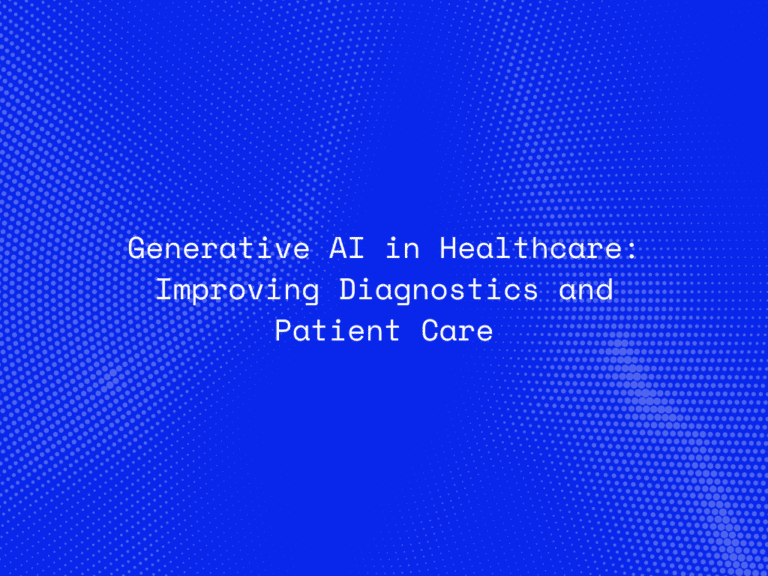Artificial Intelligence (AI) and Machine Learning (ML) are no longer experimental technologies—they are essential tools driving innovation and competitive advantage. However, building an ML model is just the beginning. The real challenge lies in operationalizing it. That’s where MLOps (Machine Learning Operations) steps in.
MLOps is a set of practices that aims to streamline the lifecycle of ML models, from development and deployment to monitoring and maintenance. Just like DevOps revolutionized software development, MLOps is transforming how businesses build, deploy, and scale AI applications in real-world environments.
In this blog, we dive into the practical application of MLOps, explore its components, and highlight how it delivers real business value by making AI more scalable, reliable, and impactful.
What Is MLOps?
MLOps combines machine learning, DevOps, and data engineering to automate and manage the entire lifecycle of ML models. It enables teams to:
-
Develop reproducible ML pipelines
-
Deploy models into production quickly and reliably
-
Monitor model performance in real time
-
Ensure compliance, version control, and auditability
MLOps bridges the gap between data scientists and operations teams, allowing ML models to move seamlessly from experimentation to production.
Core Components of MLOps
-
Model Training and Versioning
Automated pipelines ensure models are trained with the latest data and hyperparameters. Version control systems track changes to datasets, code, and models for reproducibility. -
CI/CD for ML
Continuous Integration and Continuous Deployment pipelines automate testing, packaging, and deployment of ML models, reducing human error and time to market. -
Model Serving
MLOps platforms handle model deployment across environments—on-prem, cloud, or edge—via APIs, containers, or serverless frameworks. -
Monitoring and Drift Detection
Once deployed, models are continuously monitored for performance degradation, data drift, and outliers to trigger retraining or rollback if needed. -
Collaboration and Governance
Centralized platforms allow cross-functional teams to collaborate, track experiments, and enforce policies around data access and compliance.
Why MLOps Matters to Businesses
1. Faster Time to Market
By automating the deployment process, MLOps reduces the time it takes to get a model from development to production. Businesses can respond faster to market changes, customer needs, or operational bottlenecks.
2. Scalability and Reusability
MLOps frameworks standardize workflows so organizations can scale projects across teams and departments without starting from scratch each time. Reusable components—like data pipelines or model templates—accelerate new initiatives.
3. Reliability and Consistency
Manual deployments often result in inconsistencies and errors. With MLOps, models are tested, validated, and deployed using automated workflows, ensuring consistent performance across environments.
4. Improved ROI from AI Investments
Deploying a great ML model that sits unused has no value. MLOps ensures that high-performing models make it to production, where they can drive insights, automation, and revenue—maximizing the return on data science investments.
5. Risk Reduction and Compliance
MLOps supports audit trails, versioning, and governance, which are crucial in regulated industries. It also enables businesses to detect issues like bias, drift, or security vulnerabilities before they impact the end user.
MLOps in Action: Real-World Use Cases
-
Retail: A global e-commerce platform uses MLOps to update pricing and recommendation engines in real time based on customer behavior and inventory levels.
-
Finance: Banks use MLOps to deploy fraud detection models that learn from new transaction patterns, ensuring fast, secure, and compliant updates.
-
Healthcare: MLOps helps deploy diagnostic ML models in clinical settings, where accuracy, speed, and regulatory oversight are critical.
Best Practices for Implementing MLOps
-
Start Small and Scale Gradually: Begin with a single use case and expand as your processes mature.
-
Invest in the Right Tooling: Use MLOps platforms like MLflow, Kubeflow, or SageMaker for robust pipeline management.
-
Focus on Cross-Functional Collaboration: Encourage tight alignment between data science, engineering, and operations teams.
-
Automate Everything You Can: From data validation to monitoring, automation minimizes human error and increases efficiency.
-
Prioritize Governance and Documentation: Track every step—from data source to deployment—for accountability and compliance.
Conclusion
MLOps is no longer optional—it’s the operational backbone that ensures AI delivers real, scalable, and sustainable value to your business. By enabling rapid deployment, performance monitoring, and lifecycle automation, MLOps empowers organizations to move from experimental AI to production-ready intelligence.
As businesses increasingly rely on data-driven decisions and intelligent automation, those that embrace MLOps will stay ahead—deploying faster, scaling smarter, and innovating with confidence.




